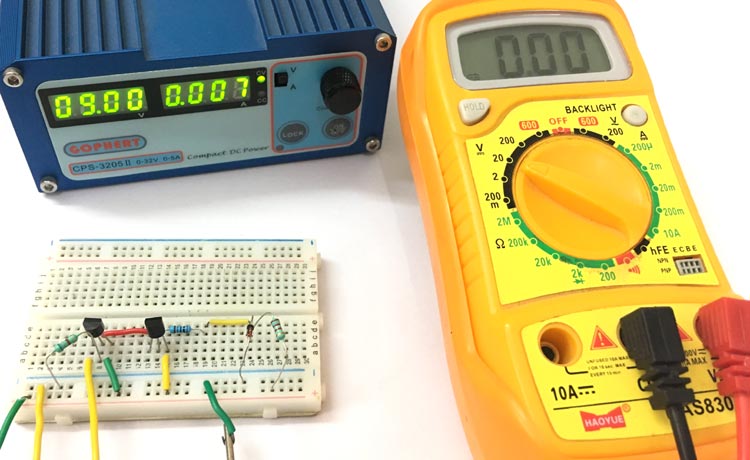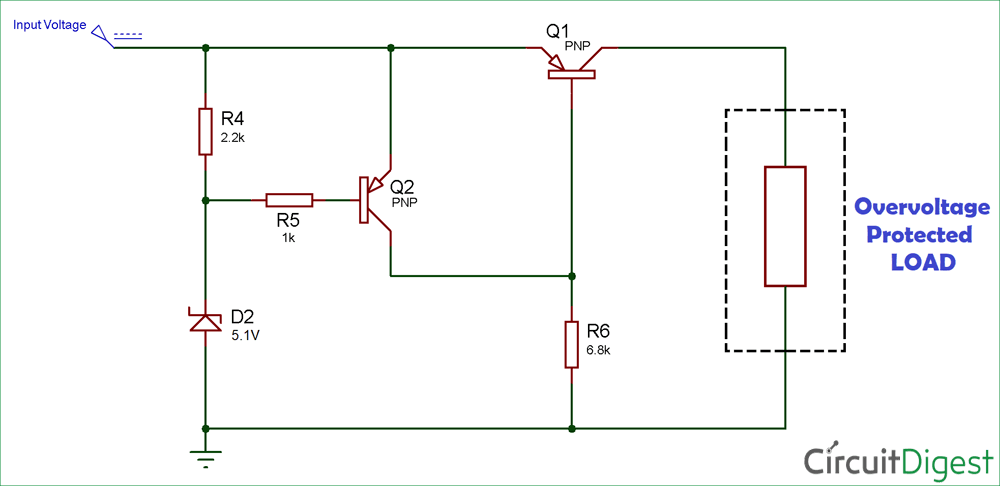
Protection circuits, like reverse polarity protection, short-circuit protection and over/under voltage protection, are used to protect any electronic appliance or circuit from any sudden mis-happening. Generally fuse or MCB is used for overvoltage protection, here in this circuit, we will build an overvoltage protection circuit without using Fuse.
Overvoltage protection is a power supply features which cutoffs the supply whenever input voltage exceeds the preset value. For protection from high voltage surge, we always use overvoltage protection or crowbar protection circuit. Crowbar protection circuit is a type of overvoltage protection which is most commonly used in electronic circuits.
There are many different ways to protect your circuit from overvoltage. The simplest way is to connect the fuse at the input supply side. But the problem is that it’s a one-time protection, because as the voltage exceeds the preset value, the wire inside the fuse will burn and break the circuit. Then you have to replace the damaged fuse with a new one to make the connections again.
Here in this circuit, Zener Diode and Bipolar Transistor are used for automatic overvoltage protection. It can be done by two methods,
1. Zener Voltage Regulator Circuit: This method regulates the input voltage and protects the circuit from over voltage by supplying a regulated voltage, but it doesn't disconnect the output part when voltage exceeds the safety limits . We will always receive an output voltage less than or equal to the rating of the Zener diode.
2. Overvoltage Protection Circuit using Zener Diode: In the second method of overvoltage protection, whenever input voltage exceeds the preset level it disconnects the output part or load from the circuit.
Zener Voltage Regulator Circuit
A Zener Voltage Regulator protects the circuit from overvoltage and also regulates the input supply voltage. Circuit diagram for Overvoltage Protection using Zener Voltage Regulator is given below:

The preset voltage value of the circuit is the critical value over which either the supply is disconnected or it won’t allow any voltage above that value. Here the Preset voltage value is the rating of the Zener. Like, we are using 5.1V Zener diode then the voltage at output will not exceed 5.1v.
When the output voltage increases the base-emitter voltage decreases, due to this transistor Q1 conduct less. As Q1 conducts less it reduce the output voltage hence maintains the output voltage constant.
The output voltage is defined as:
VO = VZ - VBE
Where,
VO is the output voltage
VZ is Zener breakdown voltage
VBE is base-emitter voltage

Overvoltage Protection Circuit using Zener Diode
Below circuit diagram for overvoltage protection is built using Zener diode and PNP transistor. This circuit disconnects the output when the voltage exceeds the preset level. The preset value is the rated value of the Zener diode connected to the circuit. You can even change the Zener diode according to your suitable voltage value. The disadvantage of the circuit is that you may not find the exact value of Zener diode, so choose one which have the nearest rating to your preset value.
Material Required
- FMMT718 PNP Transistor – 2nos.
- Zener Diode 5.1V (1N4740A) – 1nos.
- Resistors (1k, 2.2k, and 6.8k) – 1nos. (each)
- Breadboard
- Connecting Wires
Overvoltage Protection Circuit Diagram
Working of Overvoltage Protection Circuit
When the voltage is less than the preset level, the base terminal of the Q2 is high and as it is a PNP transistor, it turns OFF. And, when Q2 is in off condition the base terminal of Q1 will be LOW and it allows the current to flow through it.
Now when the voltage exceeds the preset value the Zener diode starts conducting, which connects the base of Q2 to ground and turns ON the Q2. When Q2 turns ON the base terminal of the Q1 gets HIGH and Q1 turns ON which means Q1 behaves as an Open Switch. Hence, Q1 does not allows the current to flow through it and protect the Load from exceeded voltage.
Now we also need to consider the voltage drop across the transistors, it should be low for proper accuracy of circuit. So we have used FMMT718 PNP transistor which exhibit very low VCE saturation value, due to this the voltage drop across transistors is low.
Further check our other Protection Circuits.






